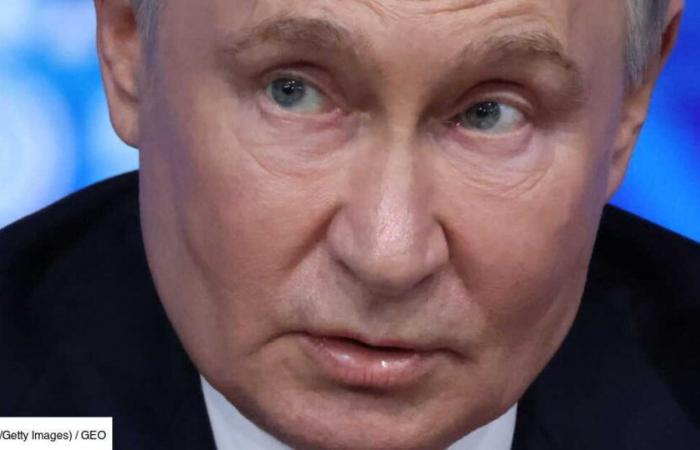After a warlike honeymoon, the Russian economy is failing, and the future does not look any brighter. The Federation’s growth, which stood at 3.6% in 2023, and is expected to reach 3.2% in 2024 according to the International Monetary Fund, has for months been taunting Western sanctions intended to force it to bend. Oil, gas, foreign assets, banks and the ruble… The West has made extensive efforts to reduce Russian capacity in Ukraine (while failing to wean itself off Russian gas), however, with mixed effects, particularly on the price of a barrel of oil, which continues to sell well beyond the ceiling set at $60.
The 2025-2027 budget bill, approved in October, provides for a 30% surge in military spending next year, when many countries such as France are struggling to reach the objective of 2% of GDP devoted to defense. Defense. “In 2025, budgetary expenditures under the national defense item are expected to amount to almost 13.5 trillion rubles [soit environ 130 milliards d’euros]”, writes the website The Bell. “This is the highest level in the entire post-Soviet history of the country,” analyzes for its part the Moscow Times and an increase of more than 70% compared to pre-war years according to Meduza.
Weapons used in the war in Ukraine
Trouble rouble
But the economic spring seems well and truly over, and the warning signals are multiplying, despite Moscow’s denials. Hampered in its cross-border payments, in particular by the exclusion of the Swift system (Society for Worldwide Interbank Financial Telecommunication) used to carry out international transactions, Russia is turning to “barter” for some of its exchanges, we explained recently. Thus, a company plans to use chickpeas and lentils as currency for tangerines, rice and potatoes from Pakistan, according to information relayed by Business Insider. Discussions around the establishment of barter between Russia and China are also underway, reports Business Insider, as well as with Afghanistan and Iran.
On October 23, the Interfax agency announced the cancellation of a bond auction on 600 billion Russian rubles (around $6 billion) of sovereign debt, due to a lack of buyers. Moreover, Russian money is suffering a severe loss of value – on October 18, the Central Bank of Russia set the official exchange rate at 97.1 rubles per US dollar – which is fueling worrying inflation, at more than 9%, more than double the objective set by the State. At the same time, Russian companies are facing labor shortages, burdened by a declining population, a high mortality rate linked to the war in Ukraine, and competition represented by the very high salaries offered by the army.
To protect its population from fluctuations in its economy and the burden represented by war, Russia spends lavishly on social projects, Foreign Policy recalls. Through 2030, the Kremlin plans to spend $431 billion on various social projects, including sending children to summer camps in occupied Crimea, building new student campuses across Russia, and increasing the minimum wage by at least 10% per year.
The state also implemented a policy of subsidized loans, which allowed millions of Russians to take out loans at 8%, with the state reimbursing banks the difference between this 8% and the key rate (gradually increased , reaching 21% in September). The Russians jumped on the opportunity, further driving the inflationary spiral and propelling the country towards a real estate bubble.
An uncertain future
These policies are expensive, and the war is voracious. Russia now has an annual budget deficit of almost 2% of its GDP. Until now, the country has drawn on its savings accumulated in its National Wealth Fund (NWF), explains Foreign Policy, but the liquid part of the fund has declined by more than half since the start of the war in Ukraine, to only $54 billion in September.
Where to find funds now? In tax revenue? Unlikely. Businesses are taking the hit from the war in Ukraine, and if the state gas giant Gazprom previously provided around 10% of the Kremlin’s tax revenues, this contribution has largely decreased with the loss of the European market, we recalled in June. On May 2, Gazprom announced that it had suffered a record loss of 6.4 billion euros in 2024, its first loss since 1999, when the company was suffering the Russian financial crisis and the collapse of the ruble.
Current solution plans would include higher taxes on wealthy households, Foreign Policy details — for a meager haul of $1.5 billion per year — and increasing customs duties on Chinese electric vehicles. A plan that could upset its “axis” with China. There remains the issuance of debt, but as the cancellation of the bond auction in October proved, Russia has become a pariah on the international financial scene, and the confidence of creditors is shaken.
Therefore, the Russian army in Ukraine, already threatened by flow problems, could lack funding. In September, Kyrylo Budanov, Ukraine’s defense intelligence chief, told participants at a conference in kyiv that Russia will try to force an end to the war in 2025, when the Kremlin could begin to face challenges. real economic problems. The question is whether Ukraine will be ready to seize the opportunity.






